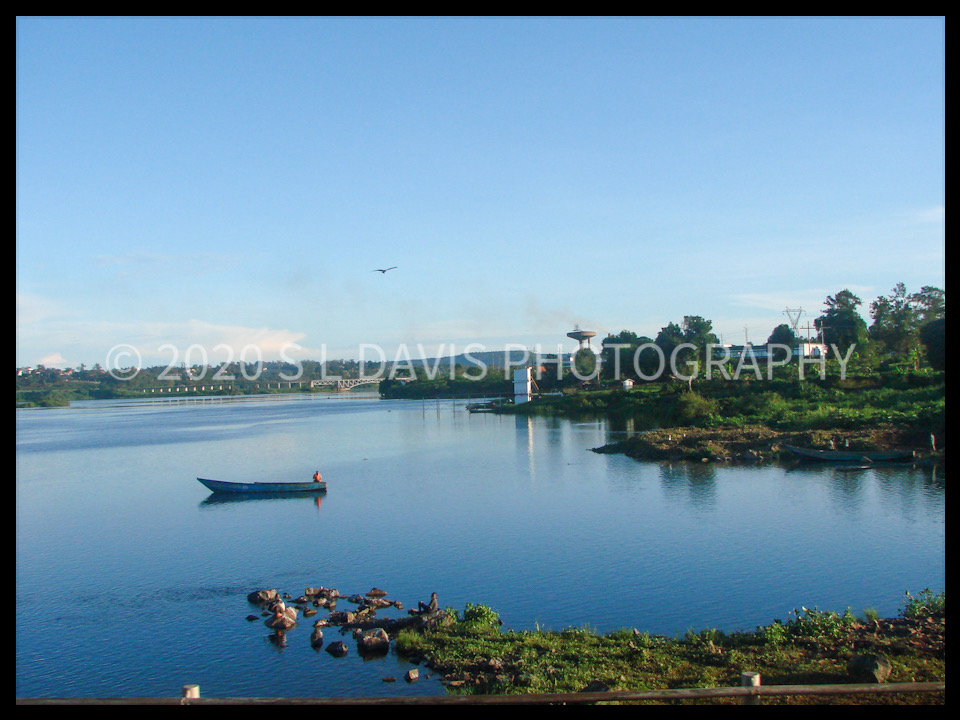
I was still buzzing from the experience of being in the presence of the gorillas and my time on Mainland Africa would be over with in a few days as I was due to head over to Zanzibar for some relaxation.
We boarded the truck at 6am and began our journey to Lake Bunyonyi, it was going to be a long drive but we had a stop over planned to break up the 8 hour drive, meaning it would be around 8pm when we would reach camp.
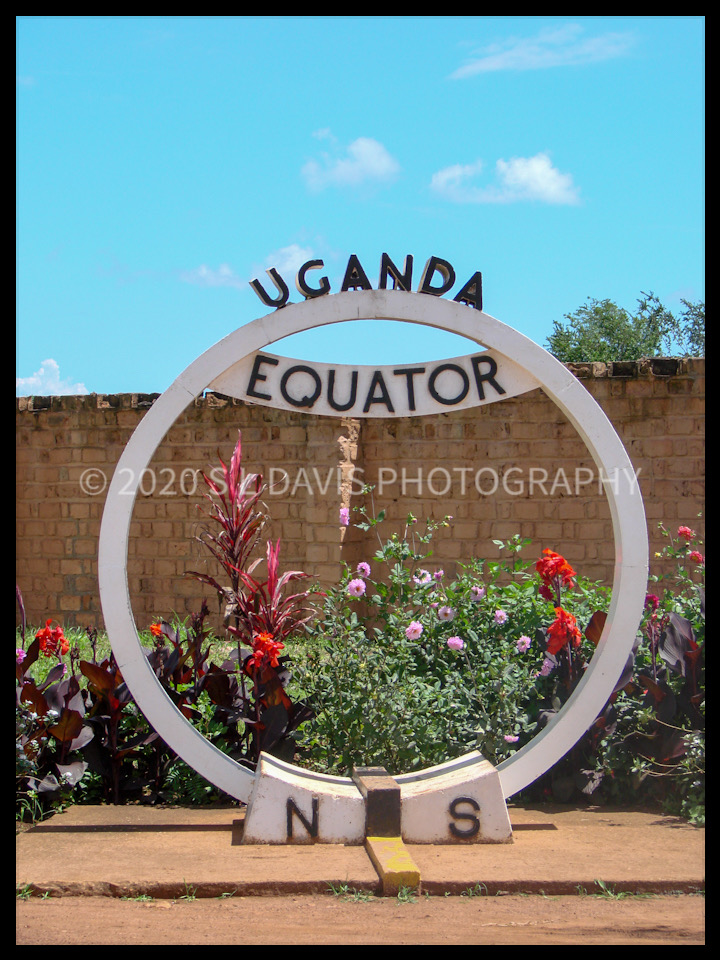
Our stop over was at the Equator! We arrived after 6 hours and were in need of a good stretch.
This is a popular spot for travellers and it is filled with fun facts. Here you get to learn about the water trick known as the Coriolis effect, whereby it creates a vortex and objects floating on water in the Northern hemisphere, move clockwise and in the Southern hemisphere, it moves anti-clockwise. On the equator, water goes straight down. Mind blowing eh? Or not so… This is actually a myth and whilst it is demonstrated before you, making it not entirely a myth, the truth is water tends to flow down the plug-hole in the direction it is introduced into a sink. The effect Coriolis has on water going down sinks, is minimal.
They also give you more specifics about the equator which I will cover as follows;
- The equator itself crosses the land or territorial waters of 14 countries. If you live on the equator you will experience the quickest rates of sunrise and sunset in the world, taking a matter of minutes. These places also have a constant twelve hours of day and night throughout the year, while north or south of the equator, day length increasingly varies with the seasons. In its seasonal movement through the sky, the sun itself passes directly over the equator only twice each year, on the March and September equinoxes. It is mistakenly believed that the weather on the equator stays the same. While tropical areas along the equator can experience wet and dry seasons, other regions may well be wet for much of the year. While temperatures at the equator are very high, there is one single point on the equator where you’ll find snow. The highest point on the equator is 4,690m, on the south slopes of Volcán Cayambe in Ecuador so in theory you could go skiing on the equator.
After our lunchtime fun facts session and I’d taken my photos of the Equator, it was back aboard for the final 2 hour drive collecting supplies in between to Lake Bunyonyi. My title photo is of Lake Victoria, this was taken as we were passing the dam. This was a sneaky shot, camera tucked a little under my left arm with some photography yoga from a moving truck. This snapshot was naughty but necessary as I wanted to show the vast beauty of this lake and we wouldn’t be stopping here. The reason why this was naughty was at this point in time, photography near the dam was banned. This was for fear of terrorism which was on the rise at this point and concerns were being raised due to several political uprisings taking place in East Africa by rebel fighters.
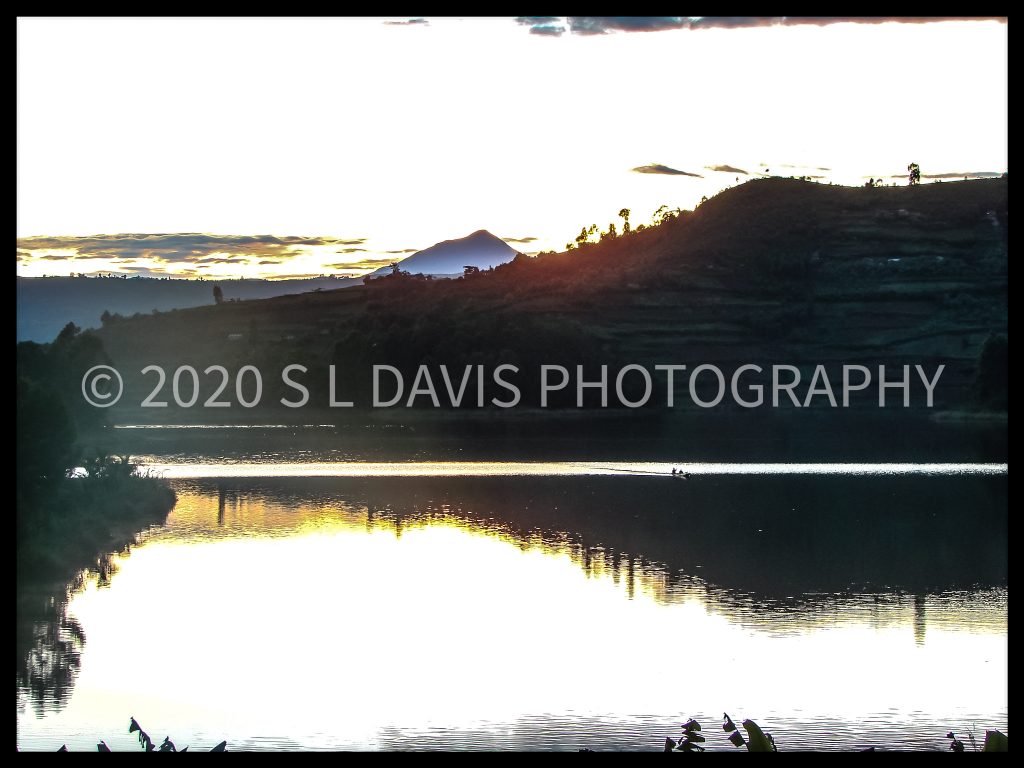
We finally arrived at camp and I took the opportunity to take a short walk around the lake to capture the late evening as I would be camping on the banks of the lake.
The following day I was up bright and early as this was a day of rest before we continued our journey the next day to Lake Nakuru. My exploration around the lake would enable me to capture the following images and see me also on another path to learn more about the native wildlife of other countries. I still have that passion to this day. As you can see there was a good variety of birds, flowers and insects, some of which I am able to name.


Black Headed Weaver 


Long Tailed Fiscal 
Pied Kingfisher
Laundry needs to be done on these travels, but it comes with a health warning. We were told not to leave clothes drying outdoors for too long as we risked botfly. The problem with botfly is not so much the fly itself. It’s the larvae.
Botfly infestation is often described as feeling movement under the skin as the larva feeds and grows, but it does not travel in the body. Once mature, the larva drops to the ground and pupates in soil. Signs and symptoms include a hard, raised lesion and localised erythema, pain, and edema. If left untreated, the larvae will eventually leave on their own, but it is painful, as they have spines on their body and as they grow bigger and bigger those spines burrow into the skin like little fishing hooks.
So problematic little critters and gives you visions of scene from the Ridley Scott’s movie, Alien.
The next day we were back on the road and our next experience would be another amazing one.
We reached Lake Nakuru. Here I would be walking amongst giants… The Southern White Rhino.
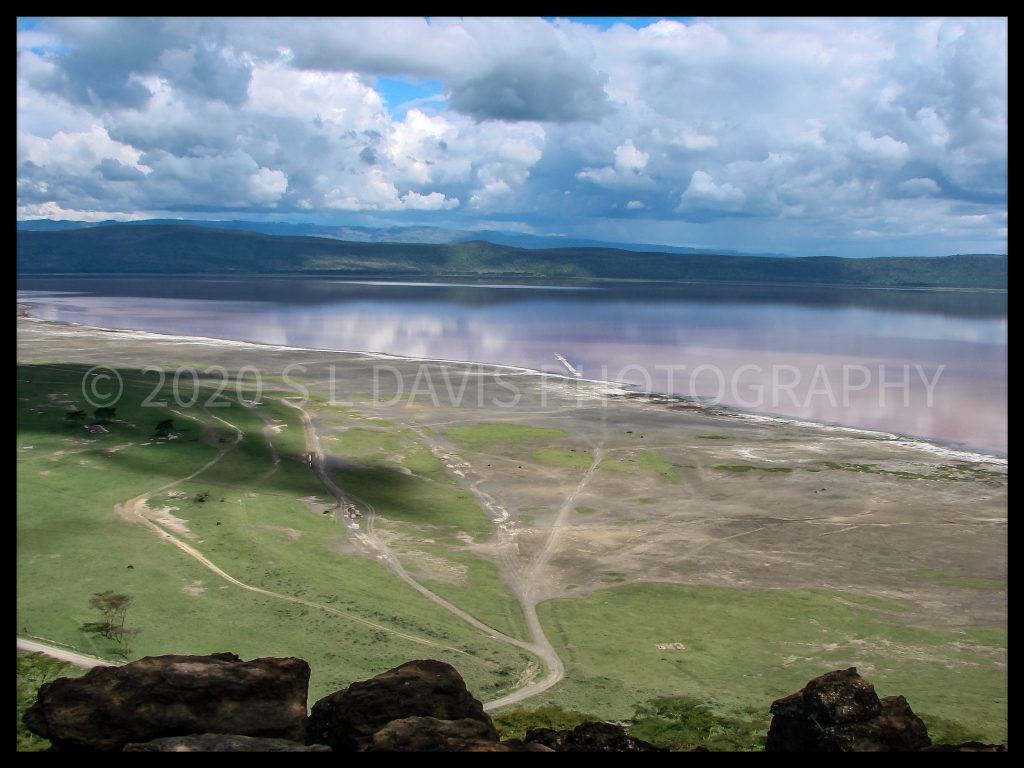
As always these areas of the plains are particularly important as there is a water source, for an array of wildlife. The waters of Lake Nakuru look almost pink and this is because of the flamingos.
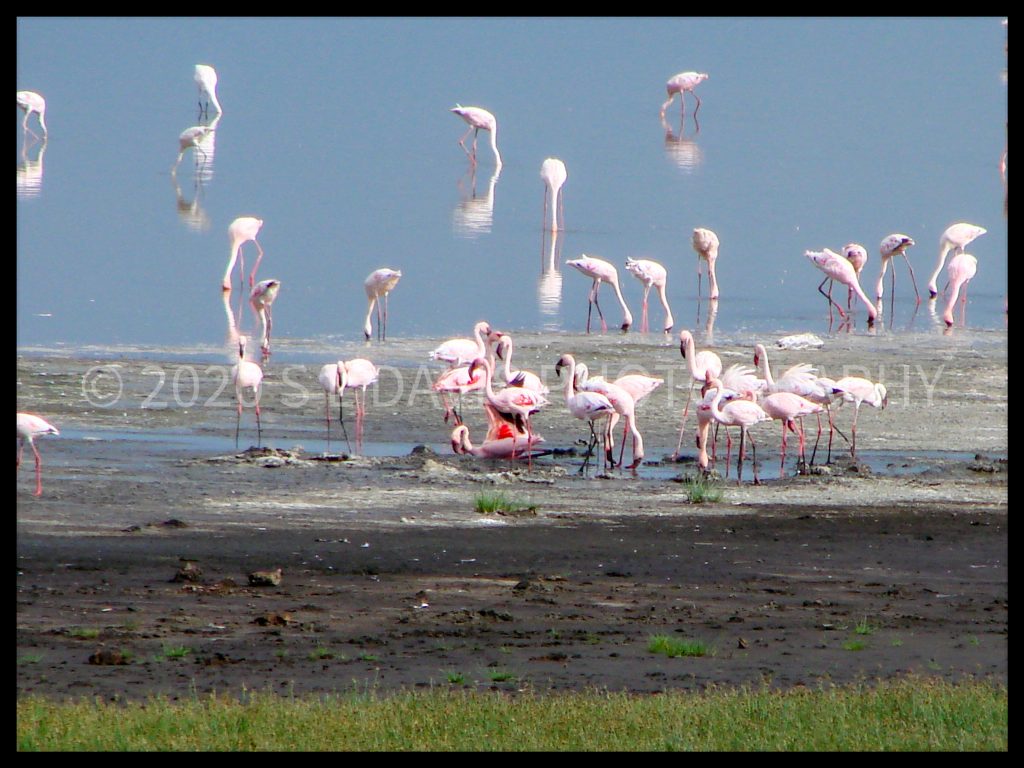
The flamingos, flock to this lake because of their food source Cyanobacteria, or blue-green alga, which has been destroyed by pollution and drought. Little was I to know that 6 year later the flamingos would disappear from here. Due to rising water levels in Kenya’s Lake Nakuru, the pink coloured flamingos that were the park’s biggest draw were forced out. Thankfully it has been recently been reported they returned in September 2020. A recent visit by researchers confirmed that, flocks of flamingos foraged for food in the lake’s turquoise waters, while others flapped in a sine-wave formation. This in itself shows the impact climate change has on natural habitats and wildlife. During our walk around the lake rhinoceros grazed nearby.
The white rhinoceros is under immense threat sitting now on a near threatened status. As of March 2018 only 2 Northern white rhinos remain and both are female. The last male Northern white rhino perished in March 2018 of old age whilst being protected from poachers under armed guard in Kenya, meaning unless science comes up with a miracle, the Northern white rhino is as good as extinct. The ones I photographed are Southern white rhinos. Currently there is an estimated 18,000 exist but due to excessive poaching this is rapidly declining. In December 2019 two male white rhinos were killed in Kenya by poachers but to lift the mood of this piece, it was reported in June 2020 a calf was born which is believed to be male and the park rangers are working hard to protect mother and calf.
The next series of photos will cover what a gem Lake Nakuru is with another fun and unusual fact which was discovered when I climbed Baboon Cliff Viewpoint.

Rock Hyrax 
Superb Starling 
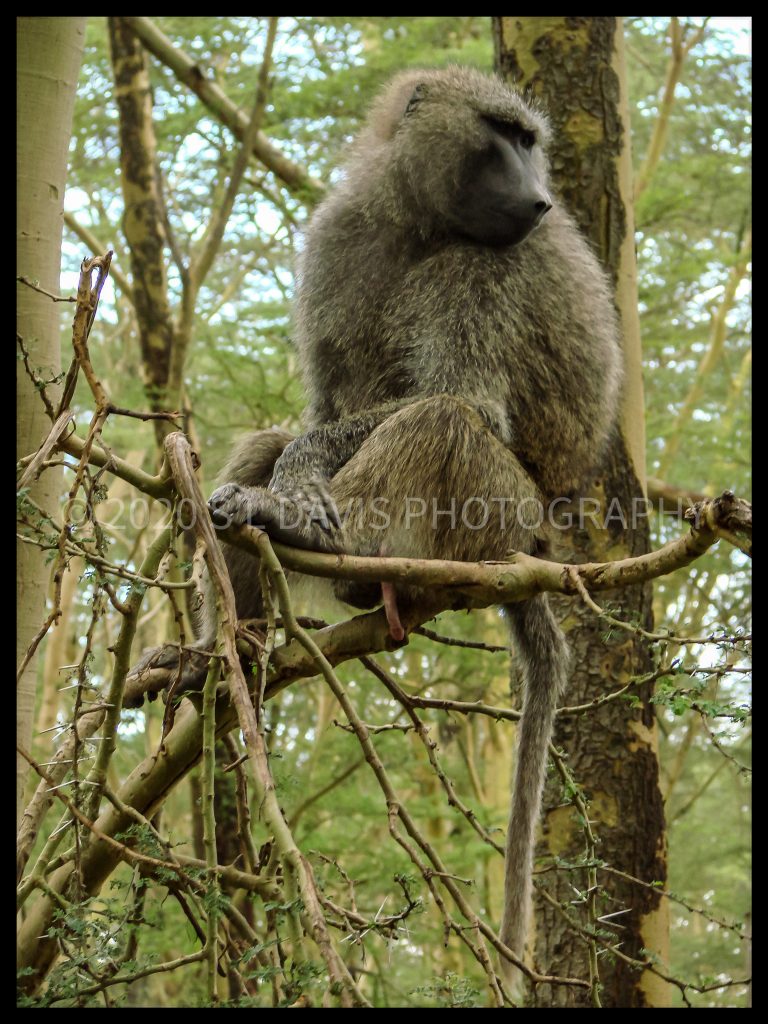
You will have spotted the animal that resembles a brown guinea pig, I photographed above.
Well this is called a Rock Hyrax and it’s closest relative is the elephant. The hyrax holds the unique honour of being the elephant’s closest living relative — on land. The elephant, hyrax and manatee all descend from a common hoofed ancestor from the group of mammals known as tethytheria, who died out some 50 million years ago.
The rock hyrax is one of four living species of the Hyracoidea family. Their habitat is limited to Africa and the Middle East.
What are these unusual characteristics I hear you ask?
Firstly, male hyraxes lack a scrotum and their testicles are tucked away in the abdominal cavity next to the kidneys – same as elephants, manatees and dugongs.
Females have a pair of teats near their armpits like elephants and they have four more in their groin. Elephants have a pair of teats near their axillae, and dugongs and manatees have a pair of teats, one located close to each of the front flippers. Like elephants, hyraxes also have tusks growing from their incisor teeth. In other mammalian species, tusks grow from the canines. Another characteristic that hyraxes share with elephants is that they have flattened hoof-like nails on the tips of their toes rather than the curved claws seen on other mammals.
So there you have it, this tiny ball of fur that looks like a bland guinea pig is in fact a mini cousin of the mighty elephant!
The wildlife in Africa is very diverse and unique. We continued on with our journey, whereby our next stop would be Lake Navisha and there we were in for another treat and would be spending one night there, before heading back to Nairobi.
As we passed through woody areas exiting Lake Nakuru, we came across numerous Baboons. This one above was up a tree and it was only after I took this photograph, I realised he was showing off more than his muscular physique…
We arrived at Lake Naivasha late in the afternoon and it was time for a rest for the evening, before more exploring to commence the following day…



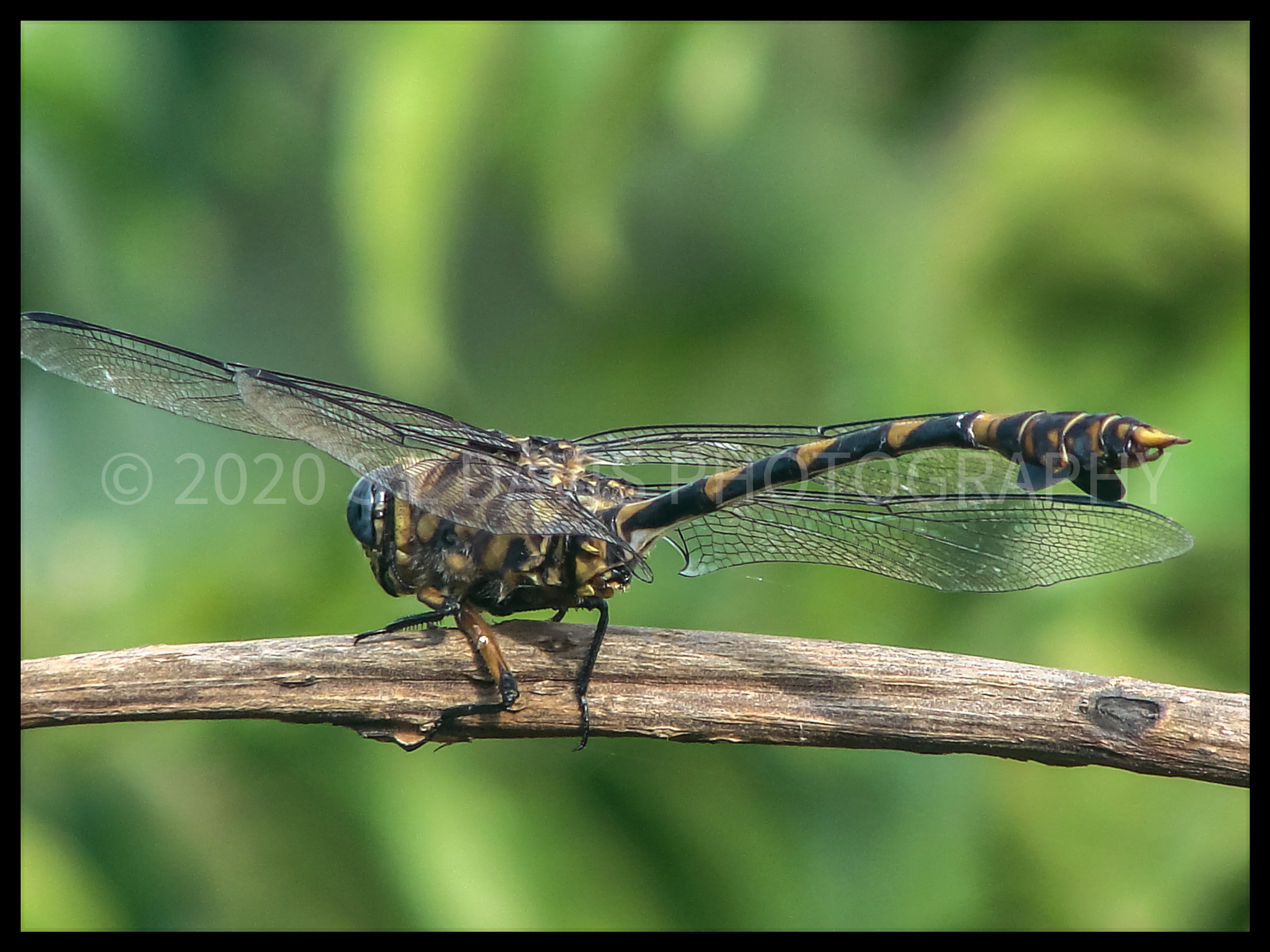







Well, you are trespassing on the baboon’s turf!! Guess he was trying to tell you, in an insulting way, that you shouldn’t be there; or he was VERY pleased to see you!!!! Just saying.
Great article; seen on WWF that with the southern white rhinos there are some 19,600 – 21,000 animals that exist in protected areas and private game reserves. They are the only of the five rhino species that are not endangered. Good place to read https://www.worldwildlife.org/species/white-rhino. It’s also an interesting read. Great photographs; you have any more of the equator or is that the only one? Would love to see more of the equator or you standing between it, like you would at Greenwich!
The water thing is interesting. So, if I run the bath then let the water out, doesn’t this show, depending the direction the water flows out, what direction Earth is turning? And the bathroom/ kitchen sink? Would be interesting to know.
The closest I’ve come to Africa is Egypt ( actually had the privilege of going inside one and experiencing the eerie cold/ change in temperature and actually feeling the spirits of the Pharaohs and having a Nile cruise ) and Tunisia.
Again, great article. Keep posting your adventures.